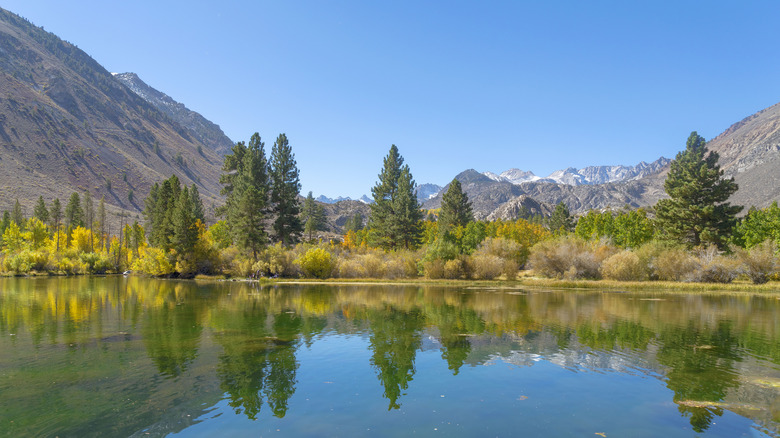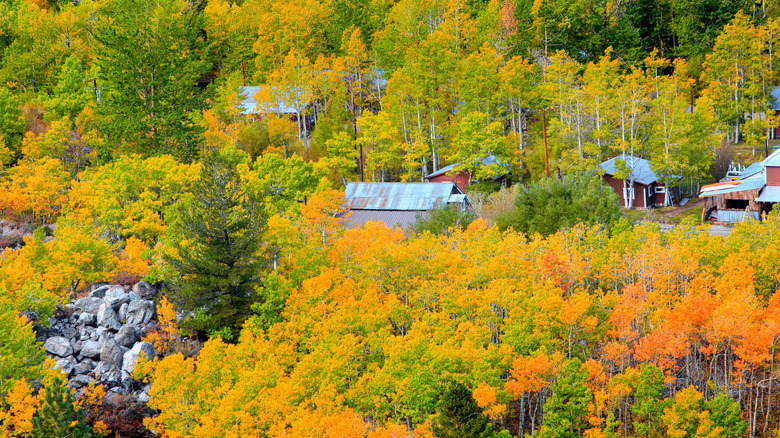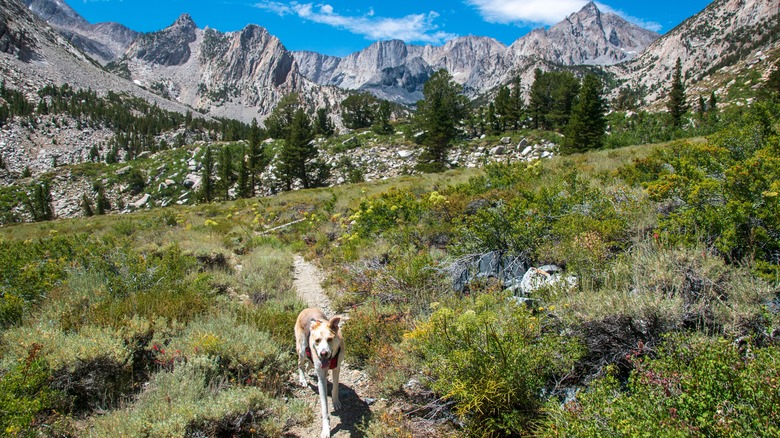A Canyon In California's Overlooked Eastern Sierra Has Some Of The State's Most Stunning Secret Campgrounds
The draws of the Western Sierra surely make it one of the most enticing regions in California. From the historic, Gold Rush town of Mariposa, aka the "Gateway to Yosemite," to the uber-enchanting Gold Rush settlements that line the 49 Highway to the awe-inspiring Sequoia National Park (the second-oldest in America), this is well-trodden territory for visitors to the Golden State. But there is a whole other side to these mountains, hidden out beyond the great Sierra Crest. It's known as the Eastern Sierra and it's home to an overlooked valley where you can find hidden campgrounds, stacks of hiking, and glimmering lakes. Welcome to Bishop Creek Canyon.
Cutting deep into the Inyo National Forest, the canyon follows the course of its namesake creek as it winds down from the high peaks. You can drive all the way up it along State Road 168, which clocks up just over 15 miles after branching off the legendary U.S. Route 395, an underrated road trip through California's most iconic scenery. Before long, you'll be cruising between sweeps of wild forests and remote campgrounds, all set under a theater of majestic granite peaks. What's not to love?
Another bonus is the relative lack of crowds compared to the hotspots on the west-facing side of the sierras. The entire Inyo National Forest reports a total of just under 5.5 million site visits each year. Weigh that against the 170 million or more that are thought to travel to the Sierra National Forest over on the Western slope. The one downside is that getting to Bishop's Creek can be a bit of a challenge. The nearest airport is the Eastern Sierra Regional Airport, but that has limited connections. Alternatively, it's a four-hour drive from Bakersfield and just over three-and-a-half hours from Reno.
Secret campgrounds pepper Bishop Creek Canyon
Bishops Creek Canyon offers 13 individual campgrounds across its 30 square miles. That makes it a veritable haven for outdoorsy types and the RV crowd. Campgrounds are spread between the main channel of Bishop Creek Canyon, the north fork of the creek, the middle fork, and the southernmost fork, with sites that suit everyone from families to solo backpackers on the hunt for real solitude in the sierras.
The Bishop Park Campground is one of the most popular in the area. It's got 21 pitches that line Bishop Creek itself, roughly midway up the canyon. They come with access to fire pits and onsite bear boxes. If you're keen to channel your inner John Muir, check out the Mountain Glen Campground. It's got just five pitches that are tucked between the woods at 8,200 feet above sea level, with prime fly fishing right on the doorstep.
If you're looking to venture right into the depths of the canyon, then make for Sabrina Campground. Set only half a mile down from the trailheads for Lake Sabrina, it's a land of beautiful aspen forests where hiking trails can lead you up into the high Sierra Nevada. The camping season typically begins with the snowmelt around the middle of April, closing again sometime in the late fall.
Bishop Creek Canyon is a land of hiking, fishing, and lakes
There's a whole valley load of Sierra Nevada exploration on the menu for folks who head to Bishop Creek Canyon. For starters, each branch of the canyon has its own major lake. Lake Sabrina caps off the middle fork with a majestic show of granitic summits haloed by pine woods and meadows. South Lake is the highest, though, offering watersports, but also access to the legendary John Muir Trail and the Pacific Crest from its perch nearly 10,000 feet above sea level.
If you've brought the rod in tow, then great — Bishop Creek Canyon is hailed as one of the fishing meccas of the region. The creeks and lakes here are restocked by environmental agencies each season, and the area is known for its oversized varieties trout especially.
Then there's the hiking. It's nothing short of epic in these parts. There's so much to get through ... Challenge yourself on the arduous route that lofts you from the Sabrina Basin Trailhead to Hungry Packer Lake, clocking up 2,400 feet of altitude gain in the process. Or go just a little easier by scaling up to the Lower Lamarck Lake on a 3-miler that offers explorations within the John Muir Wilderness.


